If you’re a garden lover looking to bring life, color, and movement to your outdoor space, planting perennial flowers that attract hummingbirds and butterflies is one of the most beautiful and rewarding choices you can make.
These fascinating pollinators aren’t just stunning to watch—they play a vital role in your garden’s health by pollinating plants, which helps them reproduce and thrive.
Perennials are especially ideal for gardeners who want a lasting impact with minimal effort, as they return year after year.
Unlike annuals, which must be replanted every season, perennials establish strong root systems and often bloom more vibrantly with each passing year.
By choosing the right varieties, you can create a pollinator-friendly garden that supports local wildlife while also offering a spectacular display of color from spring through fall.
Below is a carefully curated list of the 20 best perennial flowers known to attract both hummingbirds and butterflies.
Whether you’re a beginner or an experienced gardener, this list offers options for every type of yard, from sun-drenched plots to shaded corners.
1. Bee Balm (Monarda)
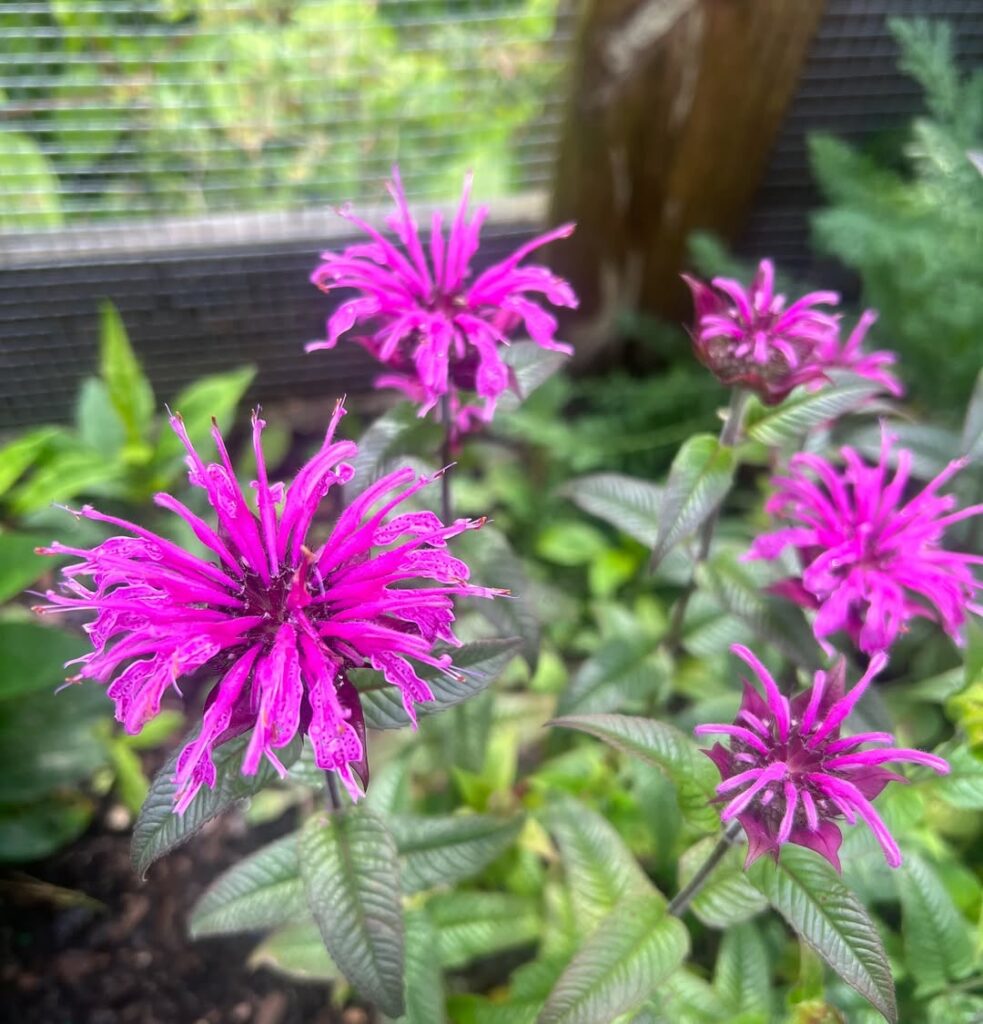
Bee balm is one of the top pollinator-friendly plants. Its vibrant red, pink, or purple tubular blooms are irresistible to hummingbirds and butterflies. It also attracts bees, hence the name. Bee balm prefers full sun but can tolerate partial shade and grows best in moist, well-drained soil. As a bonus, it’s also deer-resistant and makes a beautiful cut flower.
2. Butterfly Bush (Buddleia)
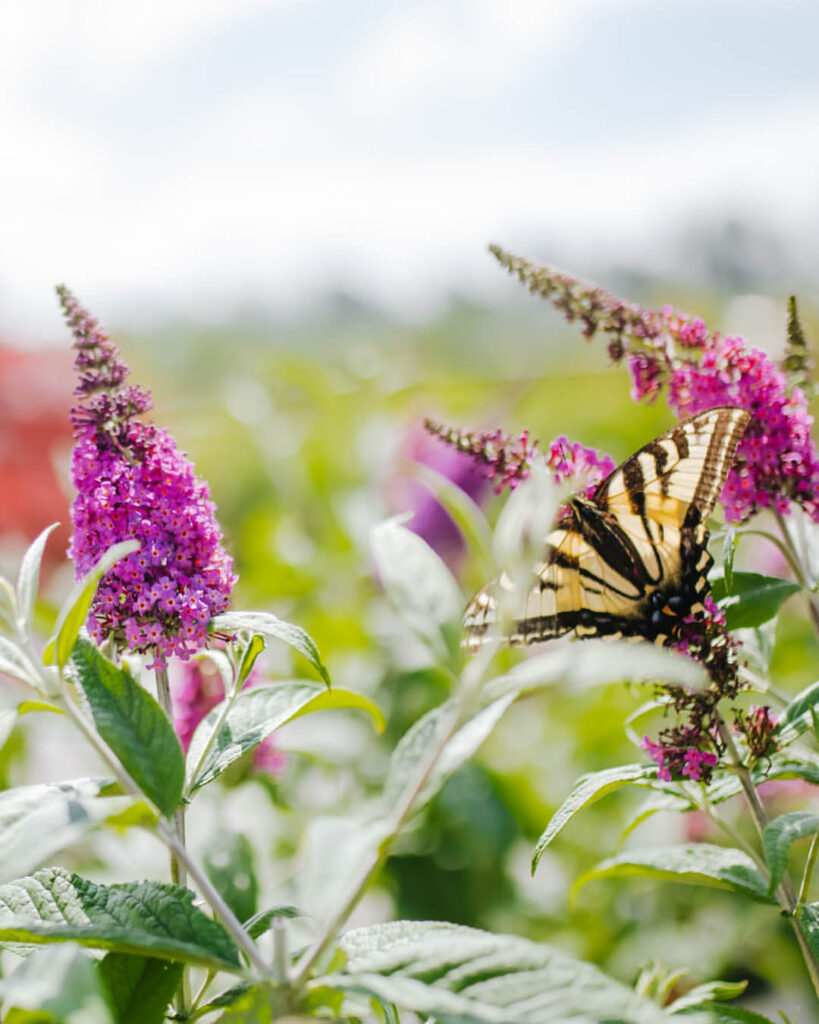
Few plants are more beloved by butterflies than the aptly named butterfly bush. It produces fragrant, cone-shaped flowers in purple, white, pink, or yellow and blooms continuously from mid-summer to fall. Its nectar-rich blossoms draw in both butterflies and hummingbirds. It thrives in full sun and well-drained soil and is also drought-tolerant once established.
3. Purple Coneflower (Echinacea purpurea)
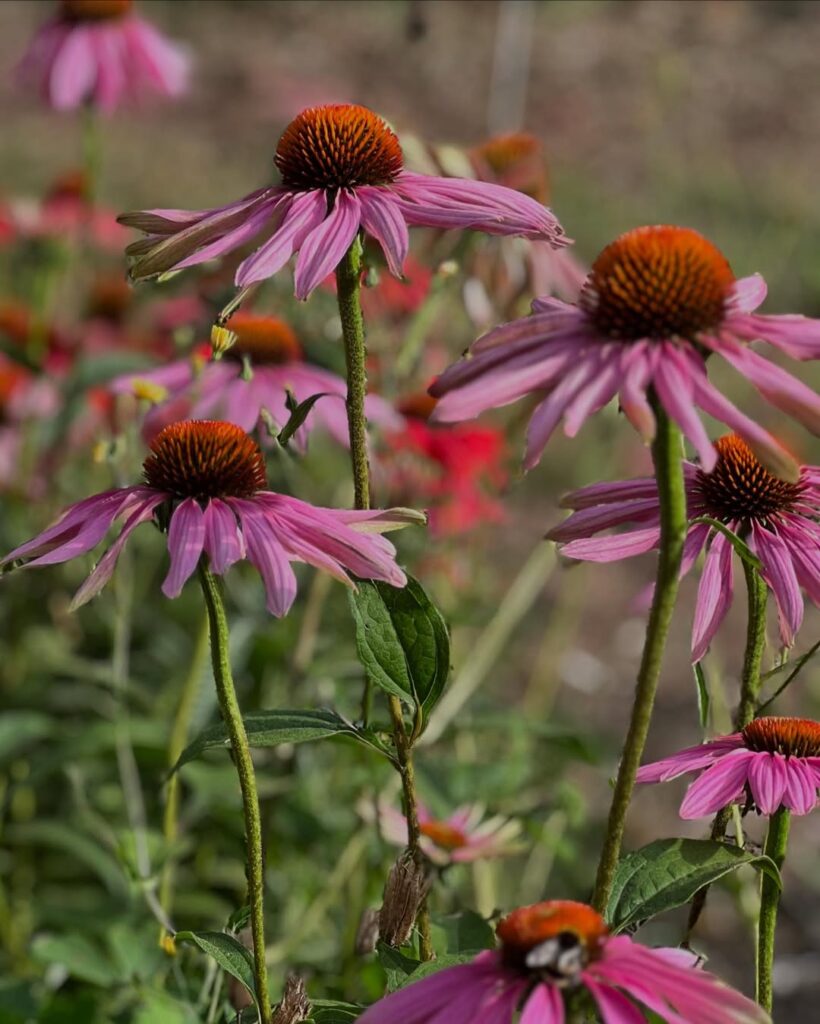
Echinacea is not only a powerhouse for pollinators but also an herbal remedy known for boosting immunity. Its sturdy, daisy-like blooms are a staple in pollinator gardens. Butterflies flock to its nectar, and when the petals fade, birds come for the seed heads. These plants are drought-tolerant, long-blooming, and thrive in full sun.
4. Cardinal Flower (Lobelia cardinalis)
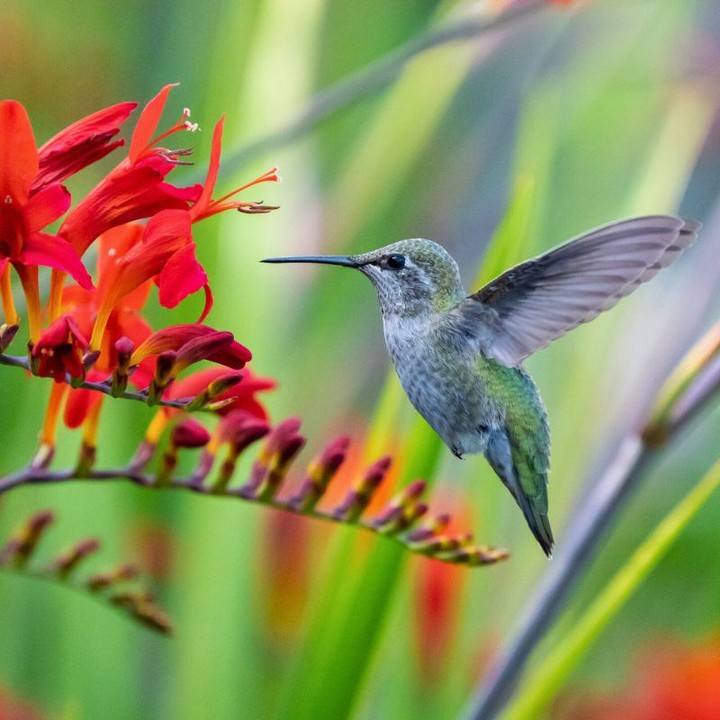
If your goal is to attract hummingbirds specifically, cardinal flower is one of the best options. Its rich red tubular flowers are tailor-made for hummingbird beaks. Cardinal flower prefers moist, rich soil and partial shade, making it a standout in rain gardens, along streams, or in wetter parts of your yard.
5. Columbine (Aquilegia)
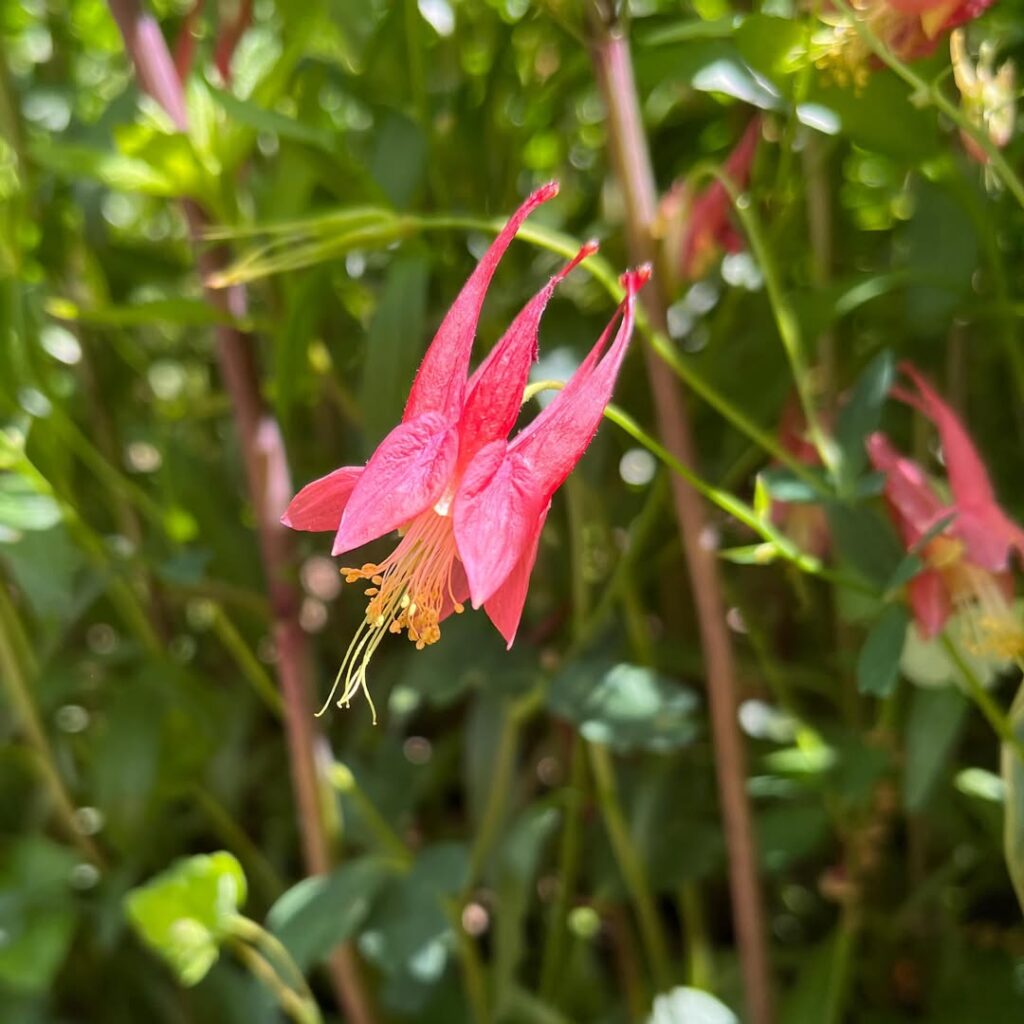
Columbine’s delicate, nodding flowers with spurred petals bloom in spring and early summer. Available in many color combinations, these perennials are a hit with hummingbirds and early-season butterflies. Columbine grows well in partial shade and makes an elegant addition to woodland or cottage gardens.
6. Salvia (Salvia nemorosa and hybrids)
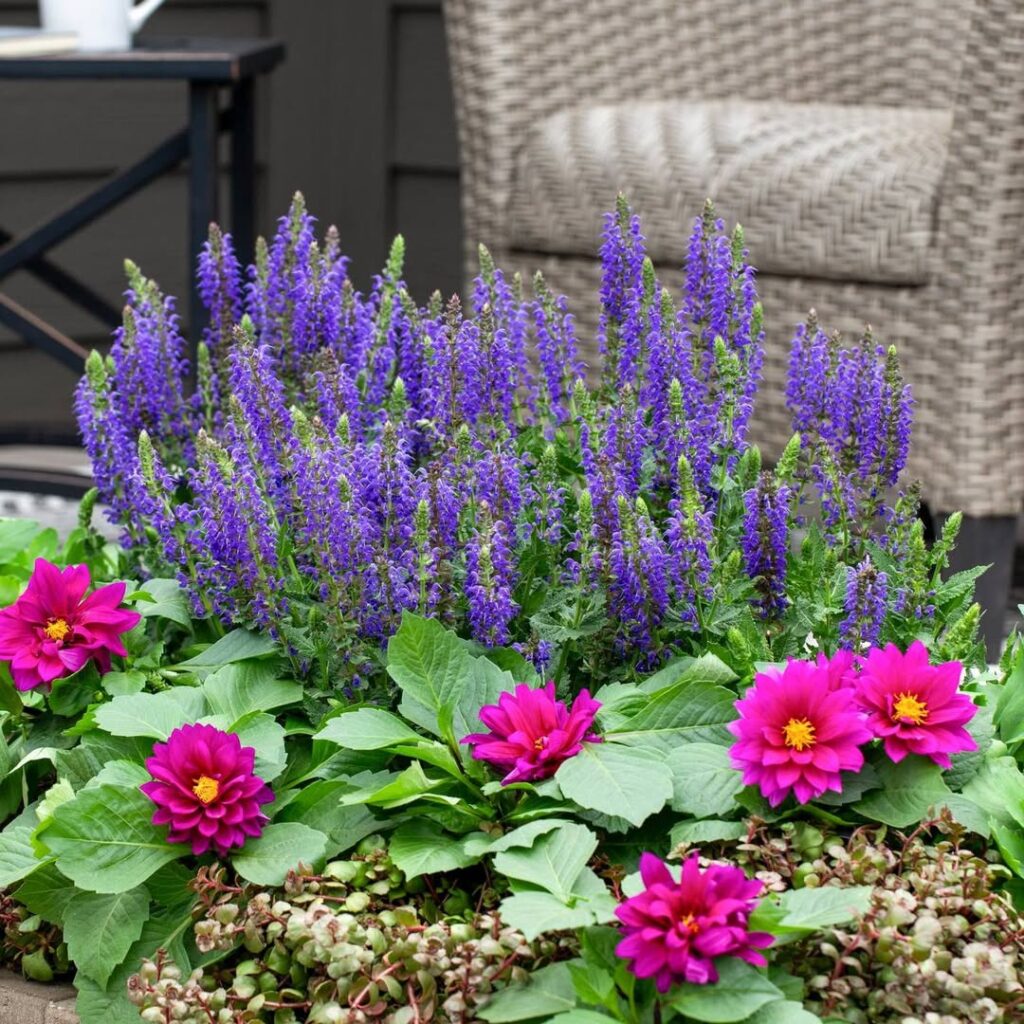
Salvias are a must-have for any pollinator garden. Their upright spikes and long blooming season make them favorites for butterflies and hummingbirds alike. They’re easy to grow, drought-resistant, and available in a range of vibrant colors like purple, red, pink, and blue.
7. Milkweed (Asclepias tuberosa and incarnata)
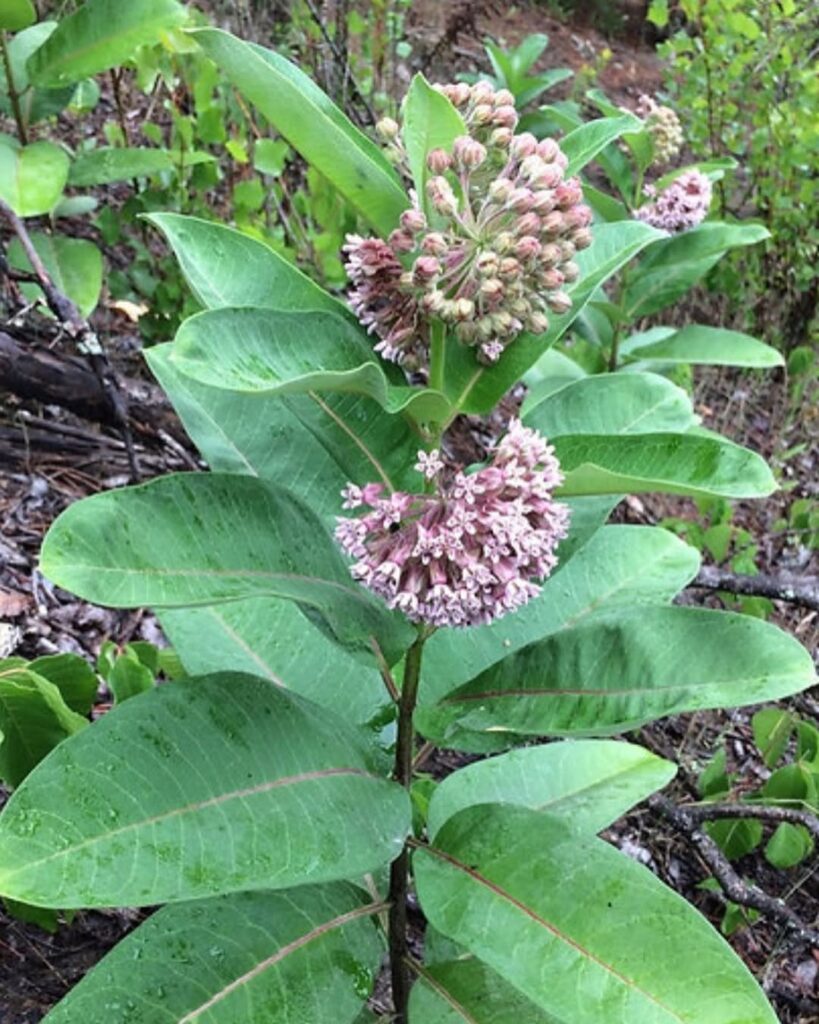
Milkweed is crucial for monarch butterflies because it’s the only host plant where they lay their eggs. It also provides abundant nectar to many other butterfly species and hummingbirds. Butterfly weed (Asclepias tuberosa) prefers dry, sunny locations and sports orange flowers, while swamp milkweed (A. incarnata) is better for wetter soils.
8. Black-eyed Susan (Rudbeckia hirta)
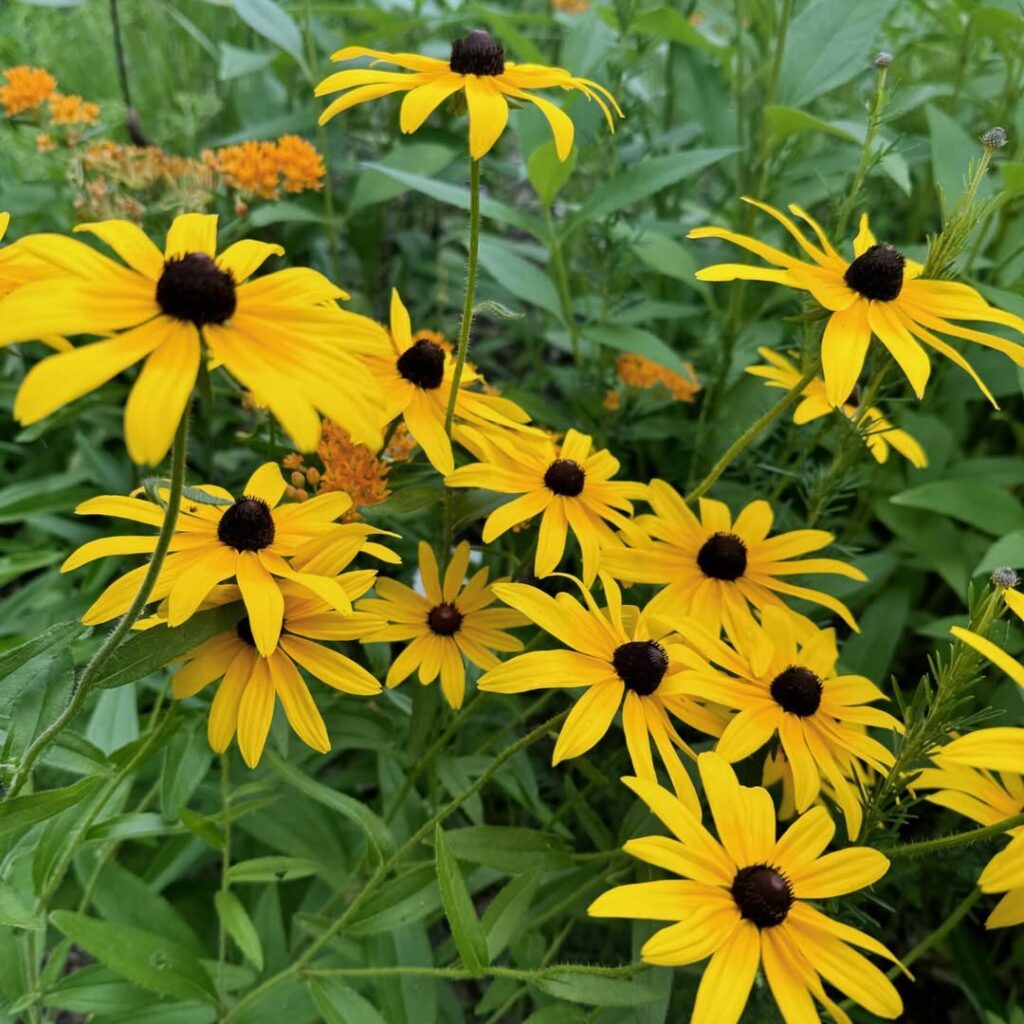
These cheerful yellow flowers bloom from midsummer to frost, offering a long-lasting source of nectar and pollen. Butterflies are especially drawn to them. They are drought-tolerant, thrive in full sun, and naturalize easily, making them ideal for low-maintenance gardens.
9. Joe-Pye Weed (Eutrochium purpureum)
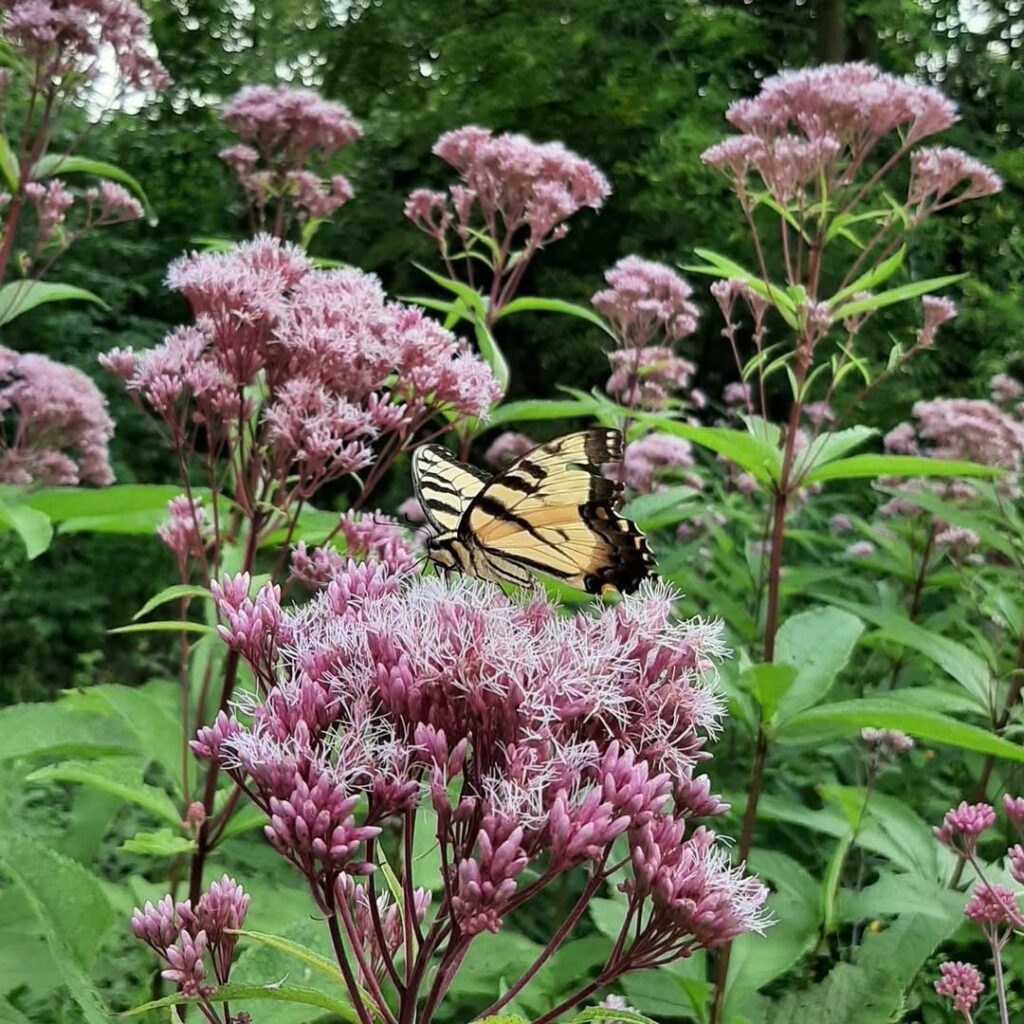
This towering native perennial can reach up to 6 feet and features clusters of pink or purple blooms. It’s a butterfly magnet, especially for swallowtails and monarchs, and hummingbirds occasionally visit too. Joe-Pye weed prefers moist, fertile soil and full sun to partial shade.
10. Lupine (Lupinus perennis)
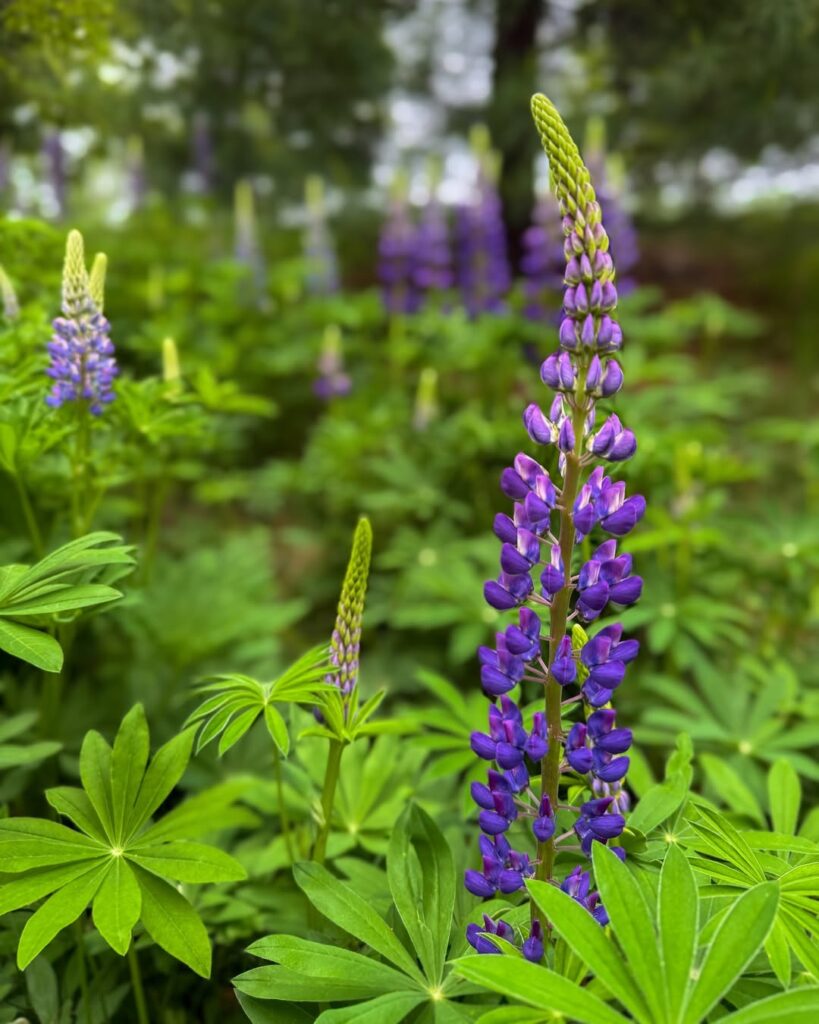
Lupines are early bloomers that come in a stunning variety of colors and feature tall spires of densely packed flowers. They’re a hit with hummingbirds, bees, and butterflies. Lupines prefer slightly acidic, well-drained soil and full sun.
11. Blazing Star (Liatris spicata)
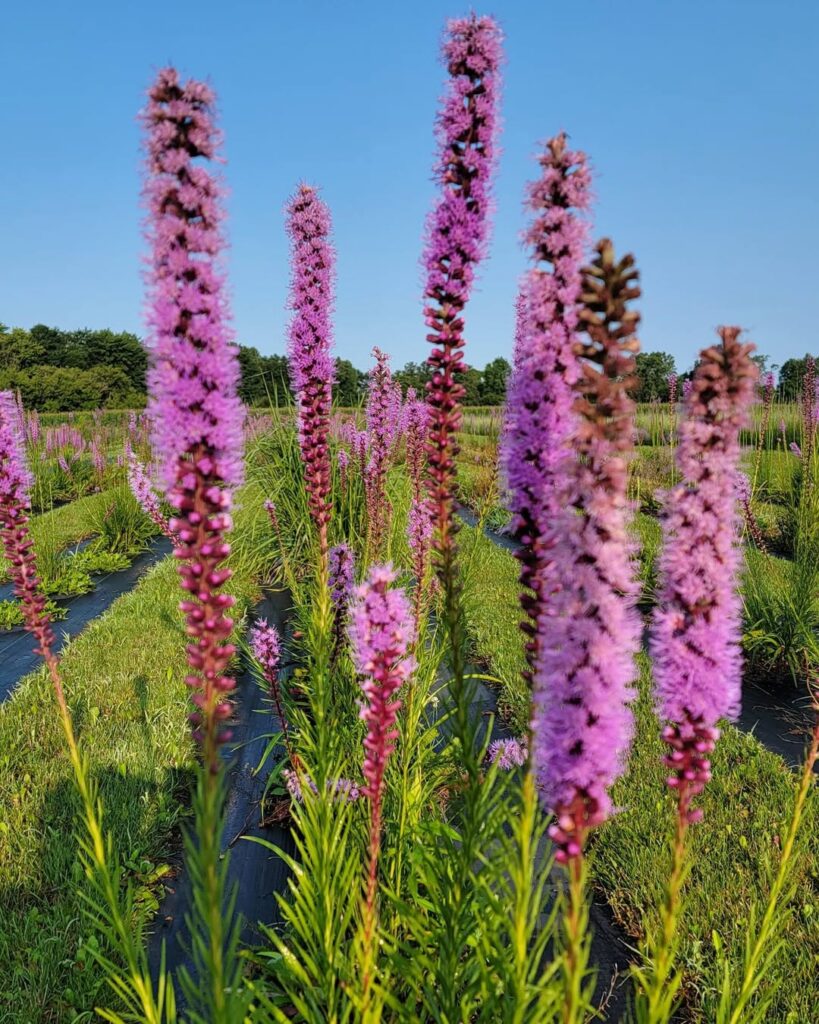
Also known as gayfeather, this native prairie plant has feathery purple spikes that bloom from the top down, which is unusual among perennials. It’s a favorite of monarchs and other butterflies, and hummingbirds love its nectar too. It’s drought-resistant and thrives in full sun.
12. Penstemon (Penstemon digitalis and hybrids)
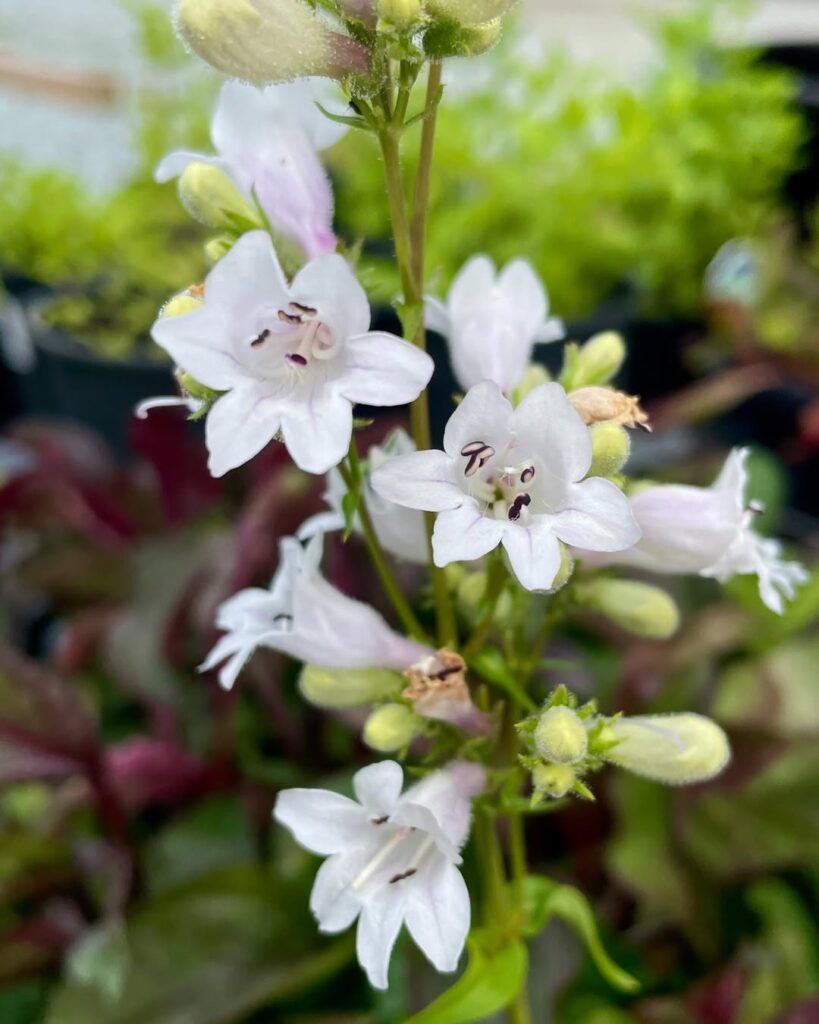
Often called beardtongue, penstemon offers tubular-shaped flowers perfect for hummingbirds. With shades ranging from white and pink to deep red and violet, these hardy perennials bloom in late spring to early summer and thrive in dry, well-drained soils.
13. Agastache (Agastache foeniculum and hybrids)
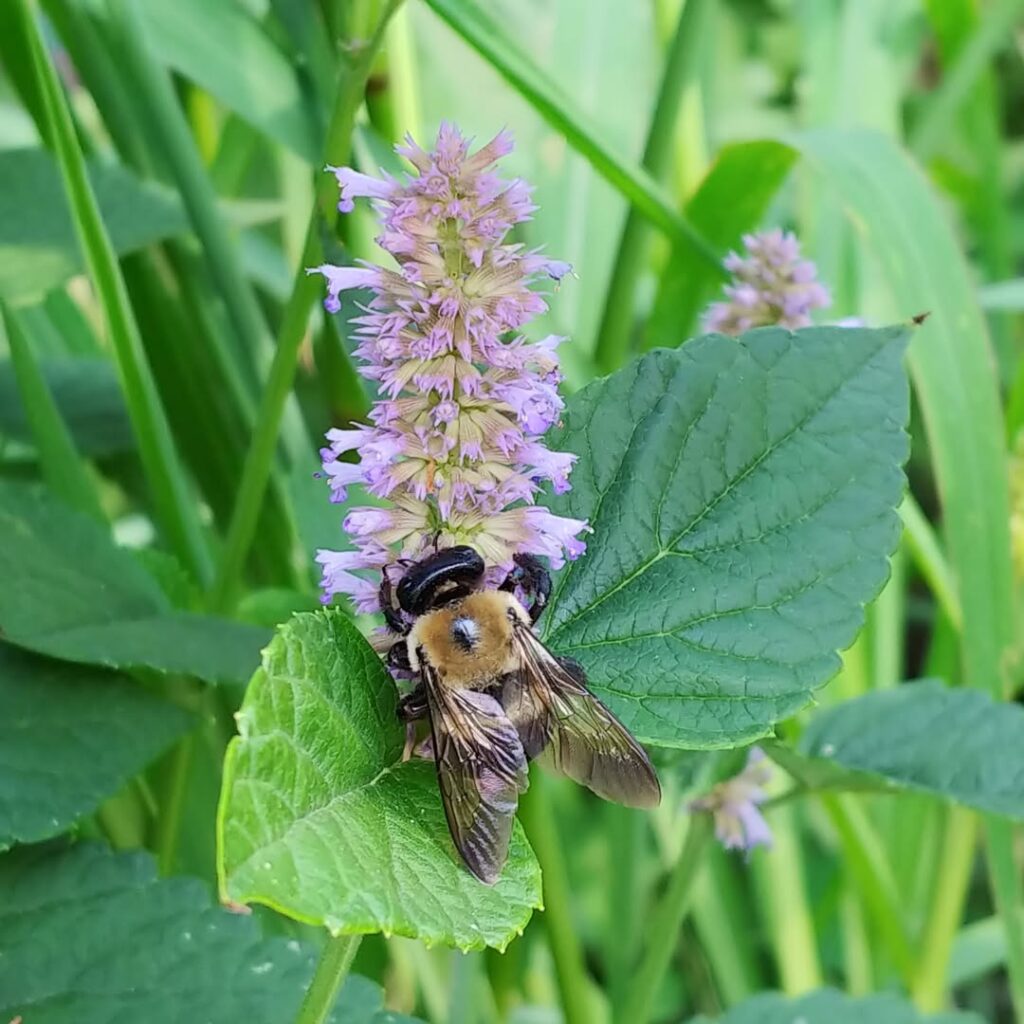
Sometimes known as hyssop or hummingbird mint, agastache produces fragrant flower spikes that bloom for months. It thrives in heat and drought and is highly attractive to hummingbirds and butterflies, especially when planted en masse.
14. Phlox (Phlox paniculata and subulata)
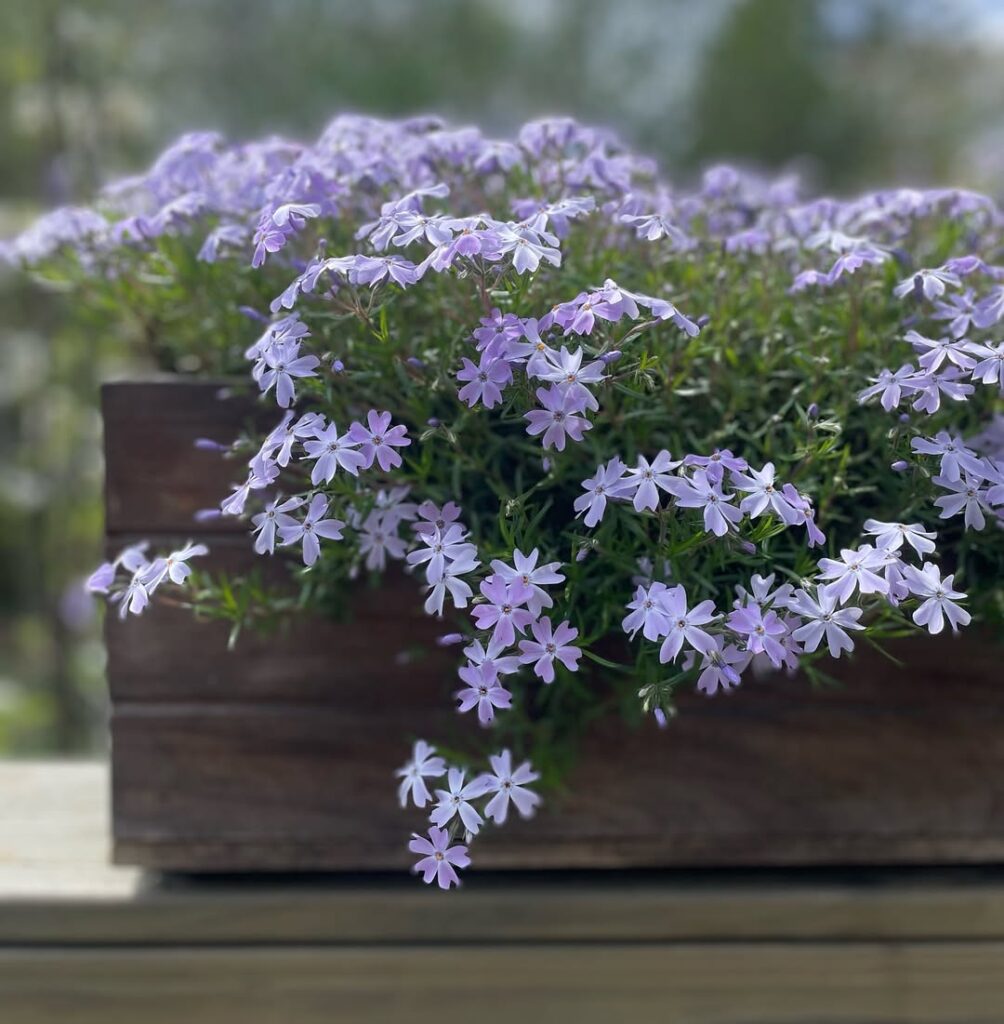
Phlox offers dense clusters of fragrant blooms that butterflies love. Garden phlox grows tall and blooms in summer, while creeping phlox forms low mats in spring. Both types are great for pollinators and look lovely in mixed borders.
15. Coreopsis (Coreopsis verticillata)
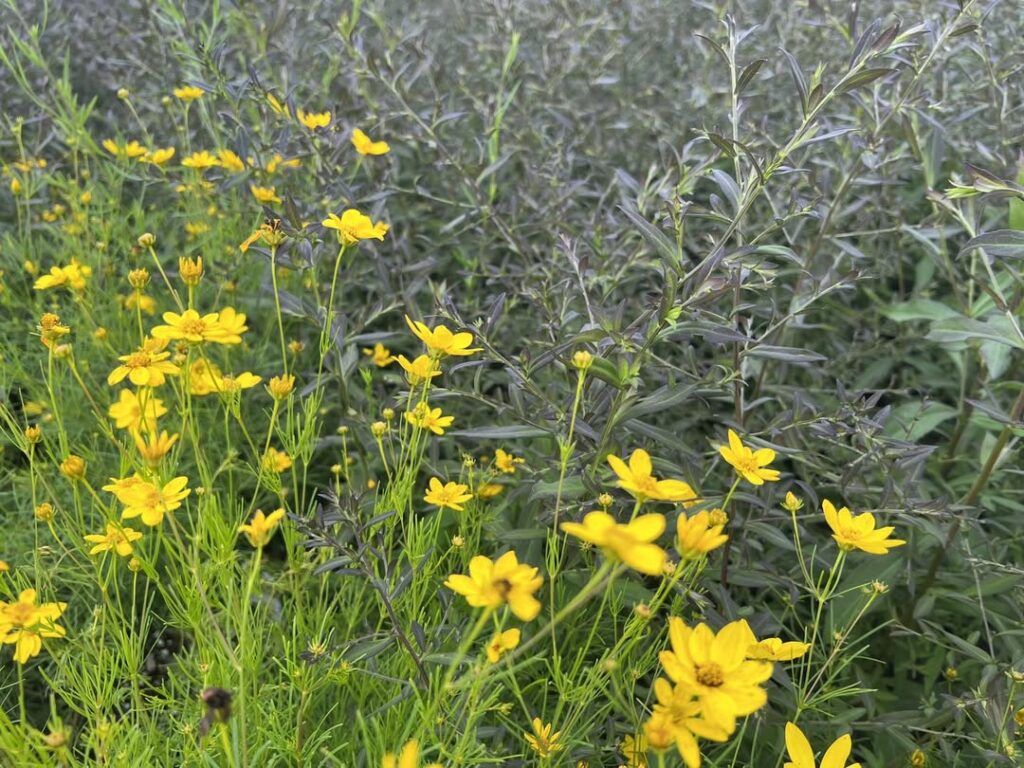
This sunny, yellow-flowered perennial blooms all summer and is adored by butterflies. It’s drought-tolerant, low-maintenance, and pairs well with other native wildflowers in pollinator gardens.
16. Verbena (Verbena bonariensis)
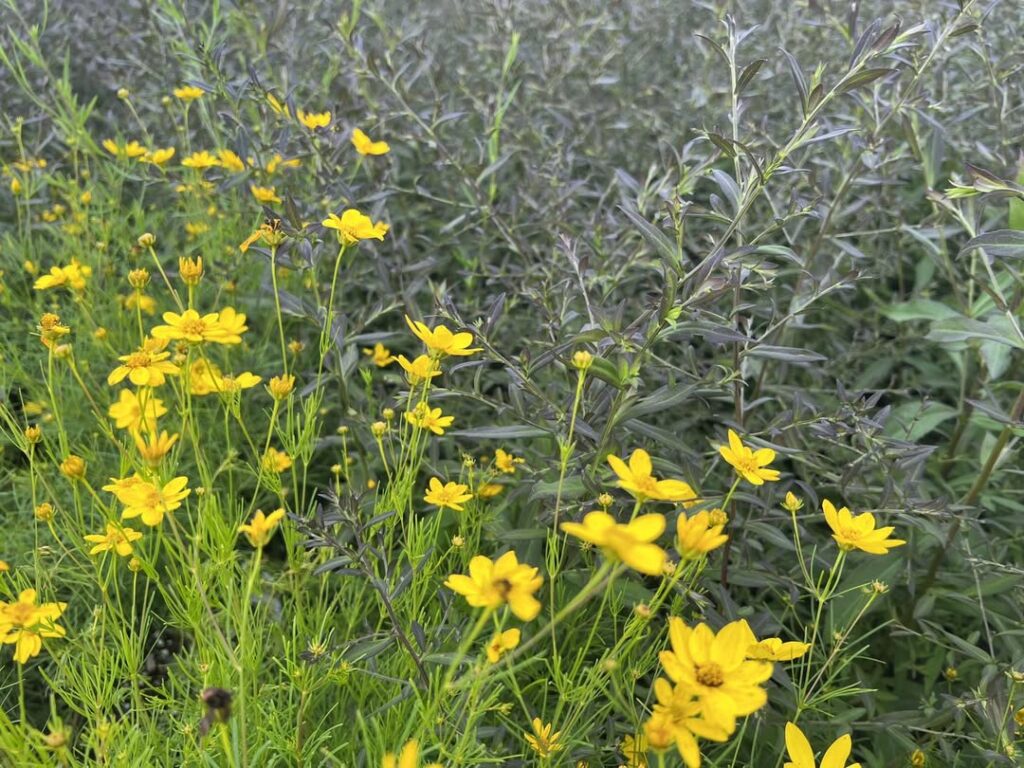
This tall, airy plant produces purple flower clusters that butterflies adore. It self-seeds freely, blooms all summer, and adds elegance to garden beds without blocking views.
17. Yarrow (Achillea millefolium)
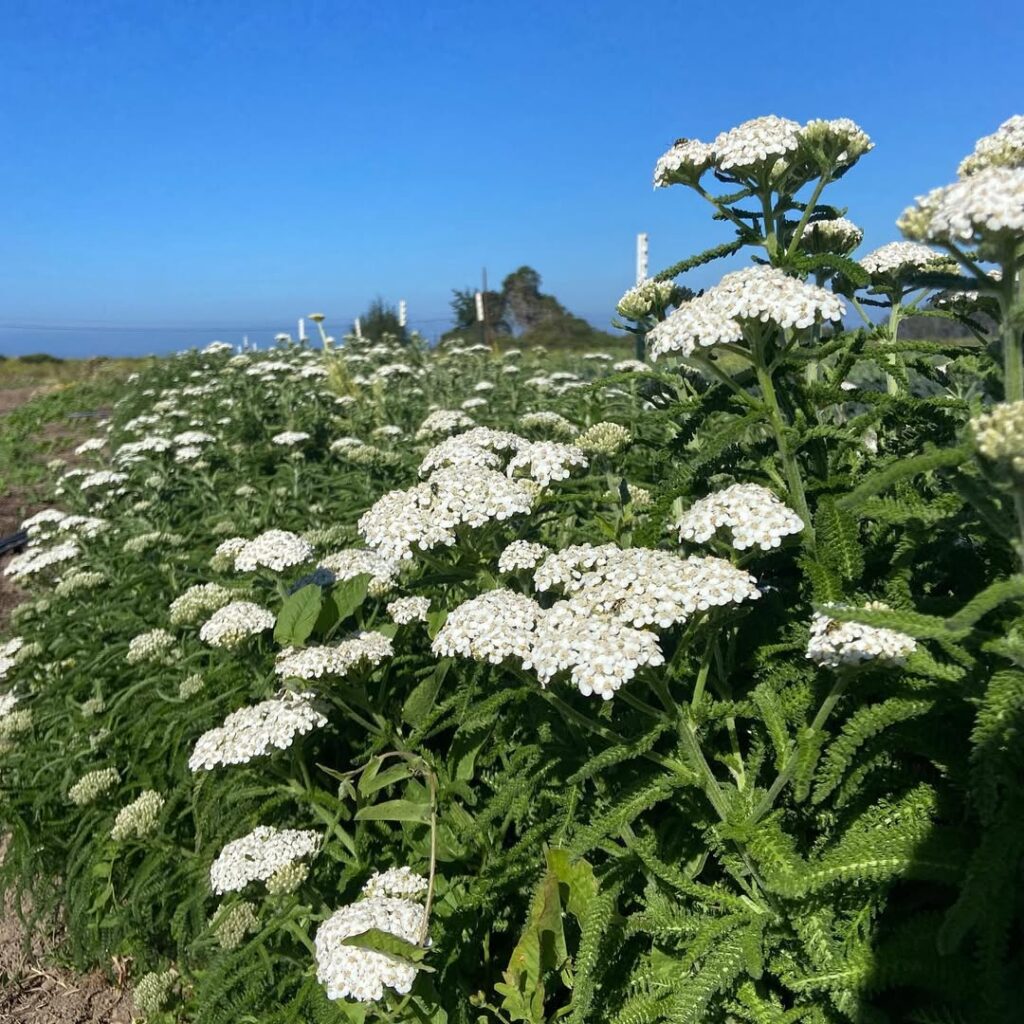
Yarrow’s flat-topped blooms are attractive to many species of butterflies, and its feathery foliage adds texture. It’s drought-tolerant and comes in many colors, including white, yellow, pink, and red.
18. Catmint (Nepeta)
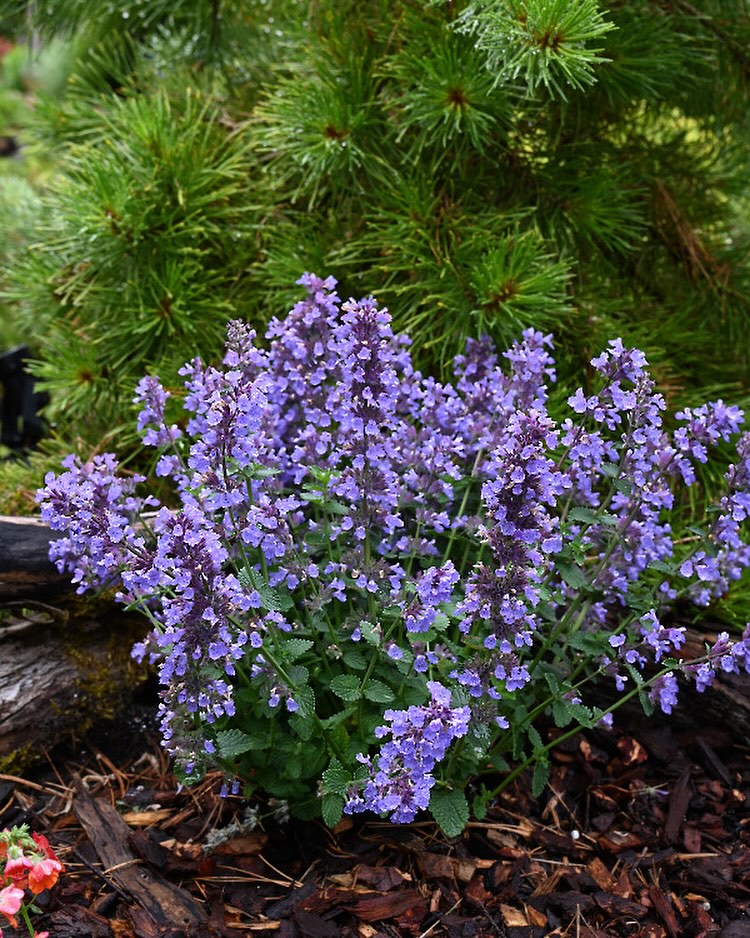
This lavender-blue bloomer produces masses of flowers from late spring into summer. Hummingbirds, bees, and butterflies flock to it. It’s also deer-resistant and very easy to grow in sunny spots.
19. Trumpet Honeysuckle (Lonicera sempervirens)

A non-invasive alternative to trumpet vine, this climbing perennial features coral-red tubular flowers that are perfect for hummingbirds. It grows quickly on fences, trellises, or arbors and adds vertical interest.
20. Spiderwort (Tradescantia)
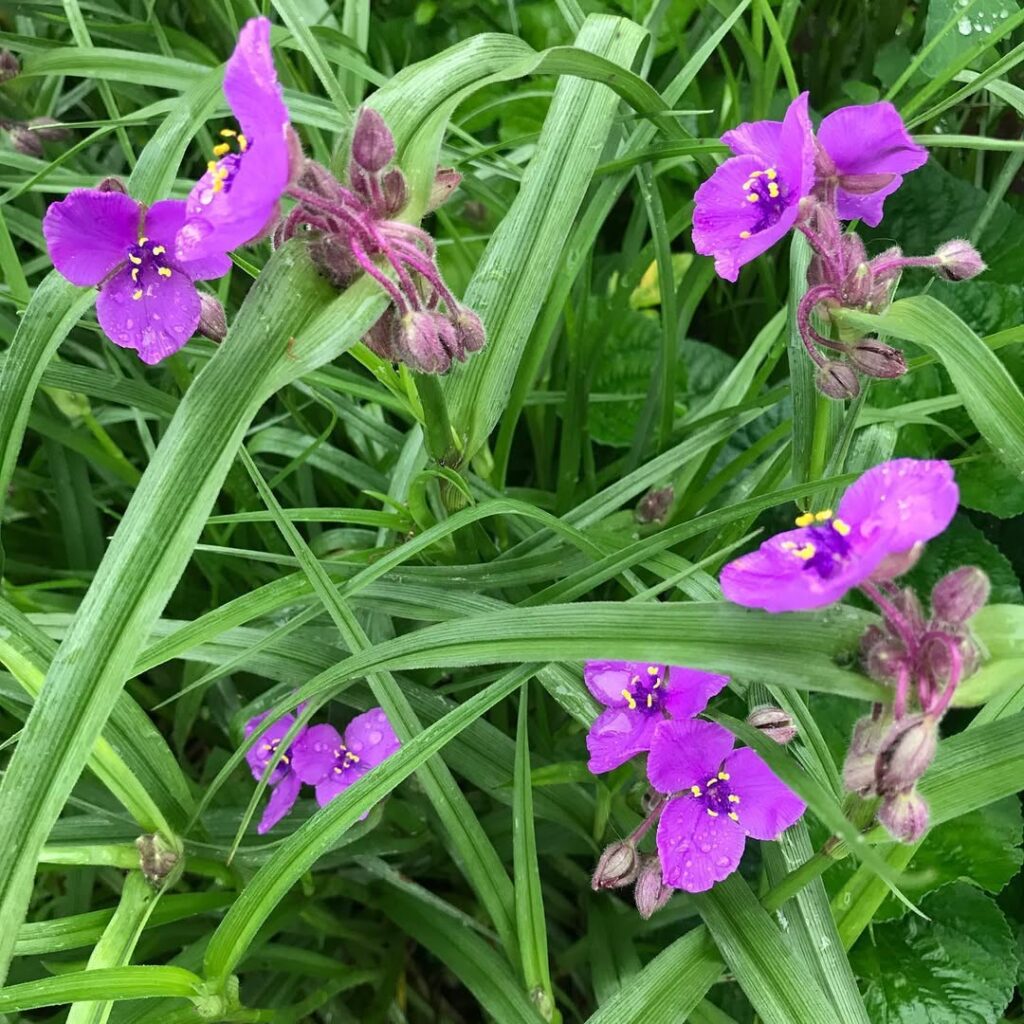
Spiderwort blooms in purples and blues and is especially attractive to bees and butterflies. It grows well in sun or part shade and adapts to a wide range of soil types.
Bonus Tips for Success
To maximize your garden’s appeal to hummingbirds and butterflies, plant a mix of early, mid, and late-season bloomers to ensure a continuous nectar supply.
Choose a sunny location whenever possible, since most pollinator-friendly plants prefer full sun. Avoid using pesticides and herbicides, which can harm both butterflies and hummingbirds. Instead, use natural pest control and let beneficial insects play their role.
Provide shallow water dishes or birdbaths for drinking and bathing. Finally, add host plants like milkweed and parsley to support butterfly breeding cycles, so your garden becomes not only a food stop but a full habitat.
Final Thoughts
Transforming your garden into a haven for hummingbirds and butterflies isn’t just a joy for the eyes—it’s an act of conservation.
By planting these 20 beautiful, pollinator-friendly perennial flowers, you create a thriving ecosystem that supports biodiversity while offering you months of color, fragrance, and movement.
Whether you plant a few favorites or go all-in with a full pollinator garden, the results will be beautiful, beneficial, and deeply satisfying.
